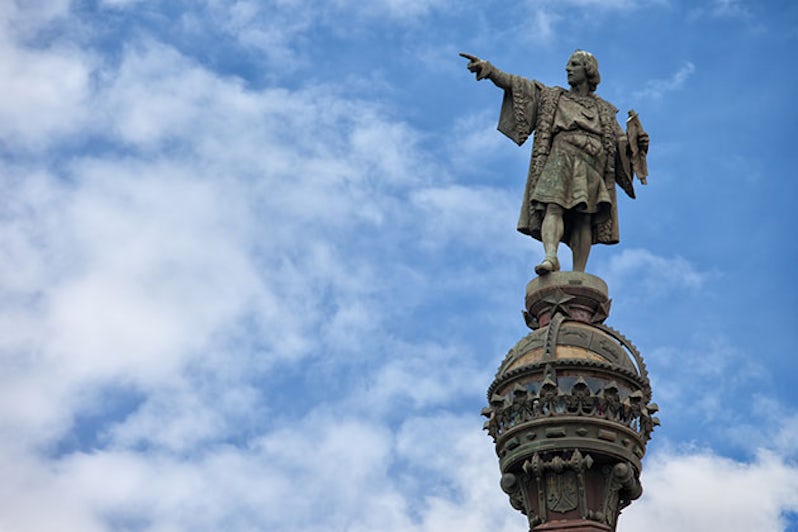History in Barcelona

The specifics of Barcelona's origins remain blurry, with artifacts that date to 5,000 B.C. having been found in and around the city, but common belief is the city wasn't actually founded until the third century B.C. What is clear is the Romans arrived in the first century B.C. and chose Barcelona as the capital of the region. Relics and remnants of those early years can still be found in the city, making it an excellent port of call for lovers of ancient history. But there's so much more history in Barcelona to be explored: Spain's Jewish heritage, the region's importance during the Medieval Ages and even the start of Christopher Columbus' famous voyage to America.
Barri Gotic
The heart of Barcelona's old city, the Gothic Quarter is a maze of narrow streets, plazas and medieval buildings, with a handful of Roman relics tucked in among the architecture. Several medieval gothic-style churches are must-stops, including the Barcelona Cathedral and the Basilica de Santa Maria del Mar. There are several museums in the quarter; the best way to see all the area has to offer is on a walking tour, booked either through your cruise line or independently. Check out the excellent free walking tour from Runner Bean Tours.

Jewish Barcelona
By the start of the 14th century, Barcelona's population was about 15 percent Jewish. Most lived in the area known as the "Call," remnants of which still exist today. To find out more about the history of Jews in Barcelona, hit the El Call museum, housed in a 14th-century building, which tells the story of Jews in the city from Roman times through the Medieval Ages. Another spot to check out is the Sinagoga Mayor (Major Synagogue), which dates to Roman times but was abandoned as a synagogue after a 1391 attack on the Jewish community forced most of Barcelona's Jewish population to flee the city.
Museu d'Historia de la Ciutat
The Barcelona City History Museum (known by its acronym MUHBA) is a collection of museums and heritage sites spread across the Barcelona that tell the history of the city from Roman days to the present. The main attraction is in the Palau Clarina Padellas in the Gothic Quarter's Placa del Rei, where you can trace the story of the city, starting with prehistoric times on the bottom floor and moving up through three floors of history.

Monument a Colom
One of Barcelona's most recognizable monuments, the 200-foot-tall Christopher Columbus Monument is located at the foot of Barcelona's Old City at the end of La Rambla. The tribute to the Italian, who explored the new world on behalf of the Spanish empire, marks the spot he disembarked from his ship in 1493 after traveling to America.
Catalonian History
Barcelona is the capital city of Catalonia, an autonomous community within Spain. It has a long history of its own, as well as a distinct culture and language that differs dramatically from the rest of Spain. To learn more about the region's history, as well as its struggles for independence from Spain, visit the Museu d'Historia de Catalunya. Exhibits focus on the development of Catalonia from prehistory through Roman times, its occupation by the Moors, the Spanish Civil War and the present day.